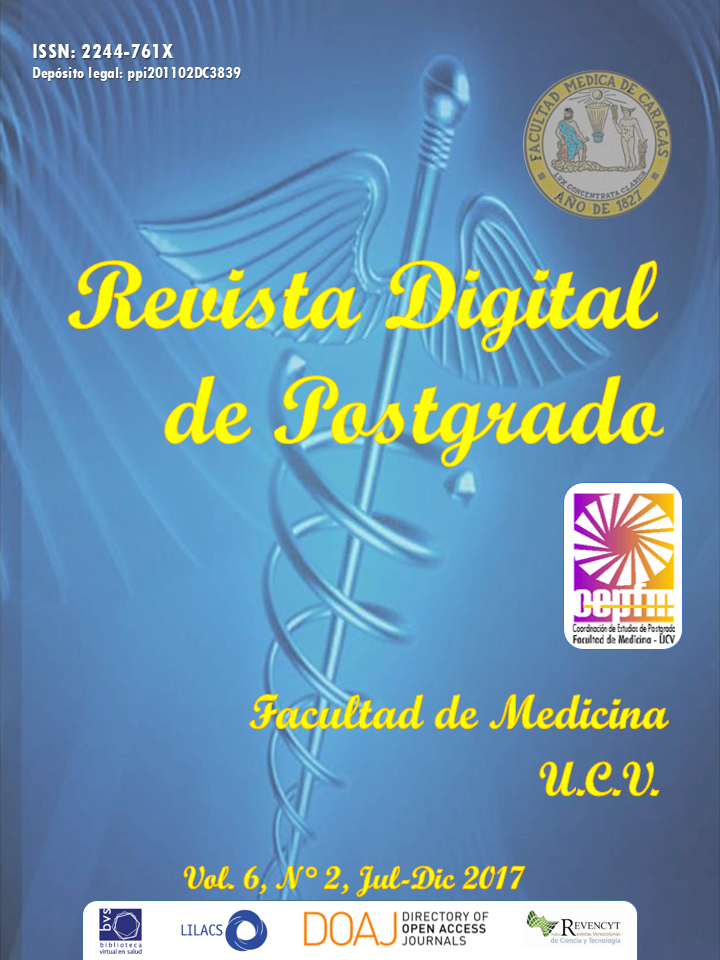Spinal cord injury: treatment and possible uses of stem cells
Keywords:
spinal cord injury, stem cells, treatmentAbstract
Spinal cord damage represents the main cause of paralysis (total or partial), which is accompanied by irreversible sequelae and a high negative impact on the patient, family and work environment. With the advent and advances in technology, techniques of immunohistochemistry, cytology and bioengineering, numerous experimental studies have been developed, aimed at recovering vertebro-spinal function, with an immense range of results, which serve as a seat for future investigations in human beings. In their majority, they evaluate motor and sensory functions during the 3 phases of the spinal injury. For this purpose, implantation techniques of stem cells (of allogeneic, autologous or xenogenic origin) are used through intrathecal or direct injection in nervous parenchyma. The results at the experimental level are encouraging; However, much remains to be elucidated about the formation of the glial scar, the inducing factors that are expressed and their impact on humans. The current guidelines in the treatment of spinal injury include improvements in the techniques of immobilization and pre-hospital transfer of the injured spinal patient, through the use of drugs (steroids, lazaroids, calcium antagonists, osmotic diuretics, etc.) up to the use of cortical stimulation, epidural and spinal nanoimplantation, as well as the application of exoskeletons and Cell Therapy. This article brings together the results of the review of studies with more than 21 thousand publications (until October 2017), where stem cells have been used to treat spinal cord injury (traumatic)Downloads
Downloads
How to Cite
Mantilla F, P. (2018). Spinal cord injury: treatment and possible uses of stem cells. Revista Digital De Postgrado, 6(2). Retrieved from http://saber.ucv.ve/ojs/index.php/rev_dp/article/view/14915
Issue
Section
REVIEW ARTICLES
License
Usted es libre de:
- Compartir — copiar y redistribuir el material en cualquier medio o formato
- Adaptar — remezclar, transformar y construir a partir del material
- para cualquier propósito, incluso comercialmente.
Bajo los siguientes términos:
-
Atribución — Usted debe dar crédito de manera adecuada, brindar un enlace a la licencia, e indicar si se han realizado cambios. Puede hacerlo en cualquier forma razonable, pero no de forma tal que sugiera que usted o su uso tienen el apoyo de la licenciante.
- No hay restricciones adicionales — No puede aplicar términos legales ni medidas tecnológicas que restrinjan legalmente a otras a hacer cualquier uso permitido por la licencia.











